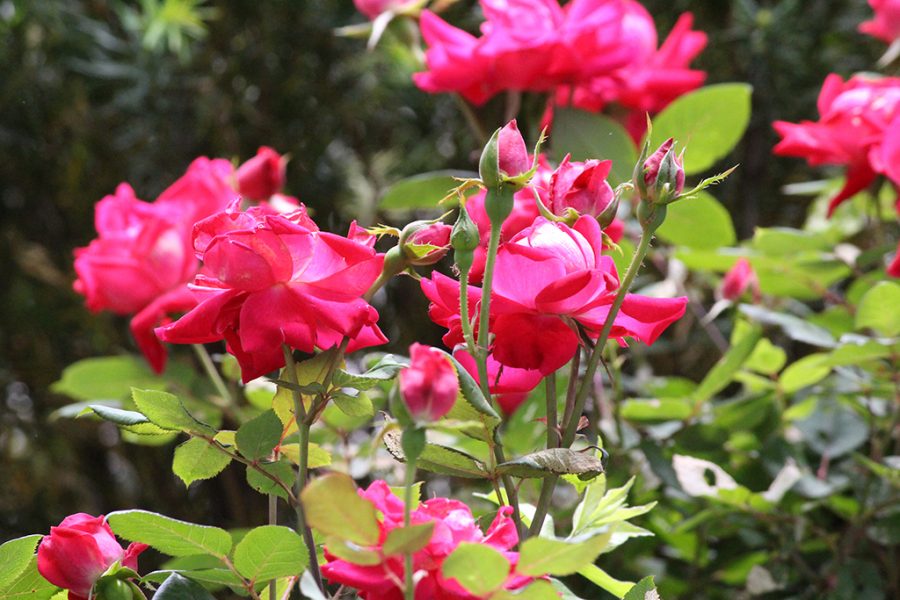A Rose — or Watermelon — by Any Other Name
The magnificence of nature can be found throughout Trinity’s campus. You just have to look! Gus Boyer shares a lesson about the beauty and fragility of nature.
October 23, 2019
Crimson, luscious, and full, the tomato sat cradled in the knotted hands of the sunbaked old man. Towering over me with his beanstalk frame, the farmer gently placed the fruit in my uncalloused palms and told me, “Here is a tomato. Treat it with the care of an infant.”
As I cautiously set the tomato on a cloth-laden wooden door serving as a tabletop, I thought to myself, “A child? It’s just a tomato.”
Newborn child or not, here I was, 7:30 on a Saturday morning at the neighborhood farmer’s market enclosed by tables of vibrant produce. To my left sat the peaches, their ripe, tender bodies leaving wet marks on the cardboard boxes that held them. To my right I could smell the sweet succulence of fat, green grapes and the savory aroma of the Italian fryer peppers.
Behind me the uncanny silence of the usually obnoxiously loud, busy street reminded me that it was too early to be out here. In front of me stood Mr. Hambley; his mud-caked boots, sunken, squinted eyes, and sunburned scalp would leave no doubt of his profession.
He had recruited me to help sell his produce at a local market, a job that I cautiously accepted.
I wondered what a city slicker like myself, pale as cauliflower and lacking any form of muscle, was doing amidst an antiquated agrarian representation of America. Nevertheless, the old man in front of me handed me a metal basket of apples and a wet, baby-blue rag, saying, “Wash them. Get the dirt spots off so customers will buy them.”
So, I sat down on the pavement and began to clean the apples, one by one. As my task wore on, I started to pay attention to the vivid detail in each fruit. A red apple wasn’t just red; there were spots of amber, speckles of a deep maroon, and a lemon ring near the stem. Each new apple became a new escapade, discovering the brilliant hues of nature captured in every fruit.
Finishing the basket, I looked over my shoulder to see my boss chatting with a customer. Unwilling to disrupt their conversation, I decided to ponder at the other colors of the various fruits and vegetables. I made my way over to the watermelon table, their emerald green skins geometrically traced by midnight black, parallel lines.
But when I turned one of the giant fruits over to examine underneath, my hands failed to account for the slippery shell of the watermelon, and it crashed to the hard pavement, splitting open. Total carnage.
With my own two hands I had destroyed the fruit of nature, obliterated its beautiful casing to reveal the bloodred insides oozing out onto the asphalt like a crime scene. Expecting a severe scolding, or worse, from the farmer, I turned my head apprehensively to find Mr. Hambley walking calmly to the accident.
Without a word he bent down onto his gangly knees and with a towel cleaned up my mess. As he stood up, noticing my obvious remorse, he smiled.
Winking, he told me, “Hey, cheer up. After all, it’s just a watermelon.”



Dan Zoeller • Oct 24, 2019 at 6:59 am
Gus – this is so well written, my mouth was watering midway through it. I especially liked your description of yourself, “pale as a cauliflower.” You have a future as a writer.